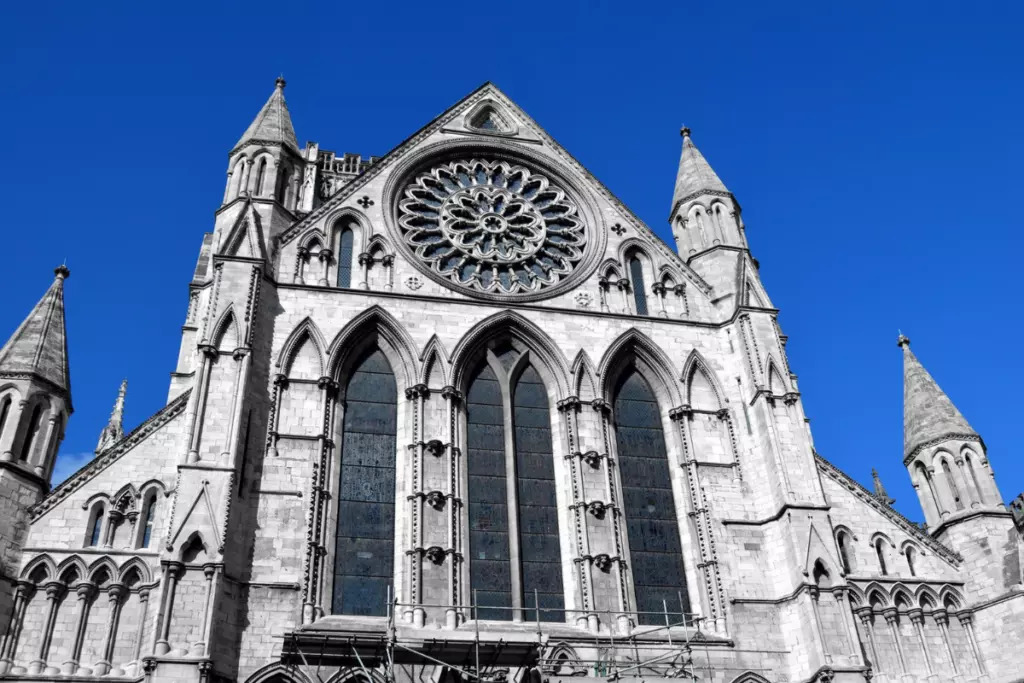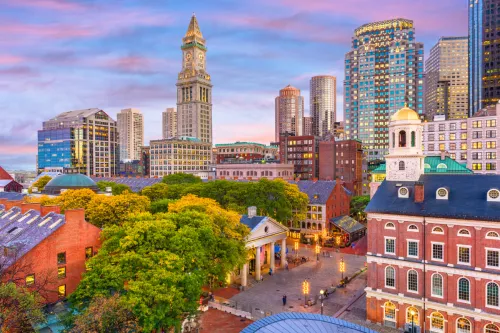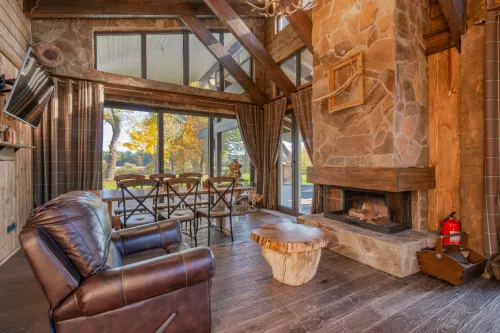Gothic architecture buildings are known for their grandeur and intricacy, and have been an inspiration in the world of design for centuries. This architecture style, also called Victorian Gothic or neo-Gothic is an architectural movement that began in the second half of the 17th century and spread throughout the first half of the 19th century, primarily in England and later throughout the western world.
Here, we’ll explore the various facets of Gothic architecture, its evolution into the American Gothic style, and its enduring popularity, especially in the Gothic Revival movement.
History of Gothic Revival Style in the US
The popularization of the Gothic Revival style in America can be credited to architects Alexander Jackson Davis and particularly Andrew Jackson Downing. They authored key house plan books, including "Rural Residences" (1837), "Cottage Residences" (1842), and "The Architecture of Country Houses" (1850), promoting this style as fitting for rural environments.
Its intricate and varied shapes harmonized seamlessly with natural landscapes, making it a preferred choice for country dwellings and homes in rural or small town locations.
Gothic Revival was equally embraced in church architecture, where its high style features like castle-like towers, parapets, and ornate tracery windows were common. This style also included distinctive pointed Gothic arches for windows and entrances.
A notable subset of this style is the Carpenter Gothic, characterized by vertical board and batten wooden siding, sharp arches, and detailed wooden trim. This name reflects the prominent use of decorative woodwork on exteriors.
What is the American Gothic Style of Architecture?

American Gothic architecture, predominantly seen in North America, is a unique architectural style that evolves from classic Gothic designs. This style is distinguished by its extensive use of wooden materials for both structural purposes and decorative elements, earning it the alternate name of Carpenter's Gothic architecture.
This architectural trend came into prominence in the 19th century, particularly between the 1840s and 1860s, and gained popularity across the Northeast and Midwest regions of the United States. It was commonly employed in the design of residential homes, churches, and educational institutions.
While Carpenter's Gothic revisits certain traditional Gothic architectural elements, American Gothic is known for its creative use of carved wooden ornamentation, infusing buildings with a distinctive and eclectic charm.
Identifying Gothic Architecture
Gothic Revival architecture can be easily identified by its elaborate detailing, pronounced vertical lines, expansive windows, and numerous pointed arches, all contributing to a castle-like facade reminiscent of medieval Gothic styles.
Elaborate Detailing
These buildings feature steeply pitched gables, often adorned with ornamental trims or details.
Construction Materials
Gothic Revival buildings were typically made of stone, glass, iron, and steel, emulating the stone constructions of the 16th century and earlier.
Vertical Emphasis
The style is marked by vertical lines and detailing that enhance the perceived height of the structures. Towers are a common feature, usually capped with finials and parapets.
Flying Buttresses
This architectural feature, crucial in Gothic Revival, involves supports extending perpendicularly from the outer walls. These buttresses connect near the top of the wall and extend outward to a support point, aiding the lofty ceilings characteristic of this style.
Pointed Arches
This hallmark feature is evident in the shape of windows, doorways, and various decorative elements.
Large Windows
The windows in Gothic Revival buildings are often tall, grand, and pointed, frequently incorporating stained glass that showcases religious narratives or vibrant designs.
Popularity of Gothic Revival
This architectural style was advocated as being well-suited for countryside environments due to its intricate and non-uniform shapes and designs, which harmonized seamlessly with the natural surroundings. As a result, the Gothic Revival style became a favored choice for residences in rural areas and small towns.
Additionally, the Gothic Revival style gained popularity in church architecture, where elements of grandeur like towers reminiscent of castles, protective parapets, and detailed tracery windows were prevalent. This style also featured the characteristic pointed arches in windows and doorways.
Distinctions between Gothic Architecture and Gothic Revival
The primary distinctions between Gothic and Gothic Revival architecture lie in the period of their construction. Gothic architecture was built in or before the 16th century and Gothic Revival was built in the 18th and 19th centuries.
Furthermore, there are the differences in the building materials and construction techniques used during those times. Gothic Revival architecture, being mainly influenced by original Gothic designs, shares many similar features and key elements with its predecessor. These include detailed ornamentation, lofty structures, expansive windows, and characteristic pointed arches.
Gothic Revival Houses: Carpenter Gothic
The Carpenter Gothic style stands out as a unique form of Gothic Revival architecture, characterized by its vertical board and batten wood siding, pronounced arches, and intricately carved wooden details. This style derives its name from the prominent use of ornamental woodwork on its exterior.
Ornamental, often referred to as 'gingerbread,' trim is applied around gables to impart a sense reminiscent of the intricately detailed Gothic buildings, while avoiding the need for extensive ornate detailing over the entire building. Additionally, features like parapets, towers, and finials are occasionally incorporated into these homes.
People Also Ask
What type materials are used to build revival gothic homes?
To replicate the stone construction style popular before and during the 16th century, Gothic Revival buildings were built with materials such as stone, glass, iron, and steel. These structures' designs frequently emphasized verticality, with lines and details enhancing the overall visual height characteristic of this architectural style.
What defines Gothic Revival architecture?
The Gothic Revival style is most defined by its use of the pointed arch, a key element in windows, doors, and ornamental aspects such as porches, dormers, or the gables of roofs. Additional distinctive features of this style are the sharply inclined roofs and gables at the front of buildings, often adorned with intricate wooden trim known as vergeboards or bargeboards.
How to incorporate Gothic elements into modern homes?
You can incorporate a modern gothic look into modern homes by using deep, bold colors and enhancing the space with unique decorations such as plants, elaborate details, and various curiosities.
Emphasizing the interplay of light and shadow can be achieved with black walls, translucent curtains, and rugs or tapestries in lush, vibrant hues. Opt for ornate or vintage furniture to lend a classic, timeless feel to your living area, and include fabrics featuring complex patterns, like damask, to complete the look.

 Marcio Vasconcelos
Marcio Vasconcelos





